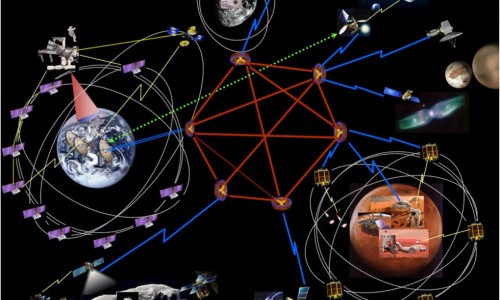RECOMMENDED VIDEOS

Chunghwa Telecom iEN service
Chunghwa Telecom Co., Ltd.

ET solar ACPV Gen-2
ET Solar Energy Corp.

EPC contractor & IPP in power plant design & construction
TELEMENIA LTD

Fronius Energy Package - The personal storage solution…
Fronius International GmbH

KaXu Solar One: clean energy for South Africa
Abengoa
Related Stories
The largest solar farm apiary in the US opens this week
The City of London will be powered with 100% renewable energy by October 2018
New study suggests that plastic waste may be transformed into usable energy
Uravu’s zero-electricity Aqua Panels produce gallons of water from thin air
104% of Portugal’s electricity consumption in March came from renewable energy
28 Jun, 2016

New NASA tech could provide the entire solar system with internet
Renewable Energy & Energy Efficiency | UNITED STATES | 28 Jun, 2016
Published by : Eco Media Asia
NASA is celebrating the first deployment of new technology at the International Space Station (ISS) that makes it much easier, faster, and more efficient to transmit data to Earth. Essentially, it’s the first step toward internet connectivity in space that is just as reliable as your home Wi-Fi signal. The new system, called Delay/Disruption Tolerant Networking (DTN), provides a smart solution to interrupted connections, and lays the groundwork for Solar System-wide internet connectivity in the not-so-distant future.
On Earth, we’re accustomed to what happens when something blocks a wireless internet signal. The connection slows, or even becomes disrupted entirely. For transmissions from ISS, this was a big problem because the objects in the way were large and numerous – planets, other spacecraft, radiation waves, and the like. Those obstacles made the signal slow, and sometimes meant some data was lost in transmission. DTN addresses those pitfalls in the way it transmits data. Rather than streaming bit by bit, the DTN process stores data when and if a connection becomes interrupted, and then forwards it using relay stations to its intended destination. This means the network can function even when a recipient server is offline.
NASA has been testing DTN technology for years, and installed it earlier this month in the Telescience Resource Kit (TReK), a software suite for researchers to transmit and receive data between operations centers and their payloads aboard station. NASA reports that adding this service on the station will also enhance mission support applications, including operational file transfers.
In order to make this giant leap for the future of space internet, NASA partnered with one of the “fathers of the internet,” Dr. Vinton G. Cerf, vice president and chief internet evangelist for Google and a distinguished visiting scientist at NASA’s Jet Propulsion Laboratory in Pasadena, California. Cerf worked with NASA’s team to develop the technology, and he predicts many benefits in space as well as on Earth, especially in disaster relief conditions. “Our experience with DTN on the space station leads to additional terrestrial applications especially for mobile communications in which connections may be erratic and discontinuous,” said Cerf. “In some cases, battery power will be an issue and devices may have to postpone communication until battery charge is adequate. These notions are relevant to the emerging ‘Internet of Things’. ”
There you have it, folks. The future is here, and it will be well connected.
Article by Cat DiStasio at Inhabitat.com
Via Futurism
Images via NASA
